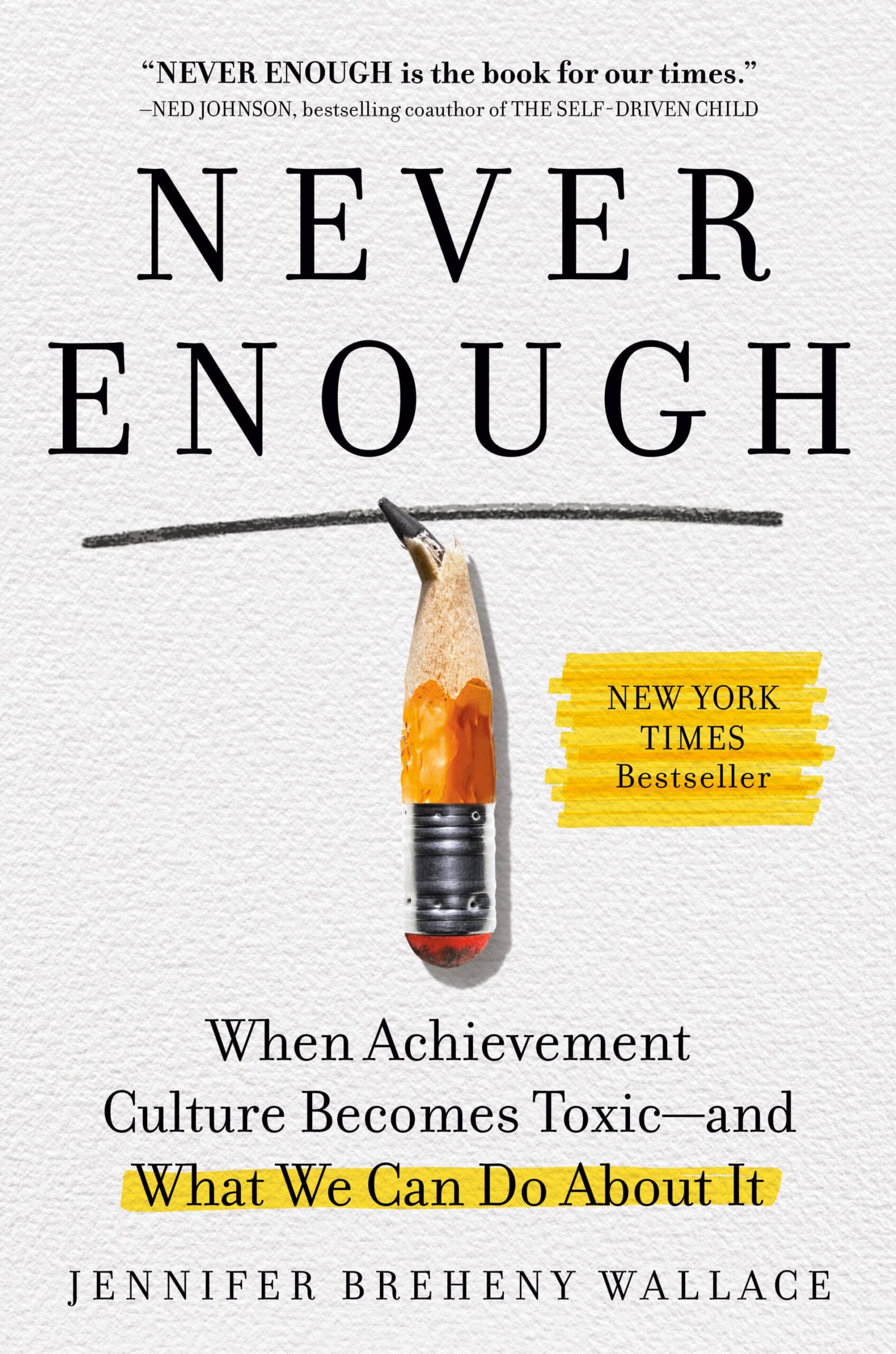
This story originally appeared on The Local Moms Network.
Our kids have gotten very good at handling a barrage of pressures; they’re likely overscheduled and grinding out their studies and extra curricular with high expectations for now and the future. But the added pressure (from us, schools and our kids themselves) can put them over the edge.
In fact, children at “high achieving schools”-both public and private-find themselves in an unexpected category: “at risk” for anxiety and other mental health issues, often because parents are pushing them too hard to succeed. This scenario is known as “toxic achievement culture” and was detailed in both a 2019 government report and further research by the Robert Wood Johnson Foundation.
Today, this study is common knowledge thanks to award-winning journalist and author Jennifer Breheny Wallace. Wallace insists she’s not against childhood achievement, but rather wants parents to teach children that their worth isn’t tied either to grades nor extracurricular wins.

Jennifer’s breakthrough book Never Enough: When Achievement Culture Becomes Toxic-and What We Can Do About It is the result of 6,000 parents interviews and the advice of today’s leading child psychologists. A journalist for 25 years, and a mother herself raising three teenagers in New York City, Jennifer wants her research to be a wake-up call that pushes parents to draw the line between encouragement and pressure.
The Local Moms Network asked Jennifer about what drove her to write the book, how parents can support kids in a healthy way, and why bolstering ourselves as parents can have a huge impact on our child’s success.
The 2019 government report put high-achieving kids in the same category as children who are poor, who live in violent communities, and those who survived traumatic childhood experiences. Tell us why this list was so troubling to you…and what these kids are at risk for.
In 2019, I wrote an article for the Washington Post about two national reports that found students attending competitive public and private schools – those with generally high standardized test scores and rich extracurricular and academic offerings – are two to six times more likely to suffer from clinical levels of anxiety and depression, and two to three times more likely to abuse substances than the average American teen. As a journalist and a parent of three teenagers, I wanted to learn more. I’ve seen achievement pressure up close in my own home and in the families around me. So, while I wrote this book for educators and parents, I also wrote it for myself. I wanted to know how to raise healthy, joyful achievers in an increasingly competitive world.
Who is a “healthy striver” and why should we aspire to raise one?
For the book, I searched for kids who were doing well despite the pressure. I found they had a lot in common, which I detail at length in the book. But it boils down to this: the health strivers I met felt like they mattered for who they were at their core, they felt valued by family, friends and community and were depended on to add meaningful value back to family, friends and community. Mattering acted like a protective shield buffering against stress, anxiety or depression. The kids who were doing the worst felt their mattering was contingent on their performance—that they only mattered when they got a good grade or did well in a game. The other group of kids I met were so focused on building their own resumes and getting ahead that they were never asked to give back to anyone other than themselves. Because no one depended or relied on them, they lacked social proof that they mattered to others.

Clearly, mattering is central to your strategy in raising your children. What does that look like for them?
Mattering is the deep human need we all have to feel significant, seen, and understood by those around us. When you have a high level of mattering – when you feel like you are valued and known for who you are at your core by your family, friends and community and when you get a chance to add meaningful value to family, friends and community – it leads to thriving. When adolescents know that they are loved and valued for who they are at their core, they enjoy a kind of protective shield that buffers against the stress and anxiety in their environment. These students still experience stress and anxiety, but they are able to bounce back from it because mattering acts as a kind of buoy, helping them bounce back up.
Resilience is exactly what we’re looking to build in our kids. In fact, you say our child’s resilience rests on a healthy caregiver. Explain what this means and how we moms can bolster ourselves.
I was surprised to find out that the #1 thing that promotes resilience in our kids isn’t a list of things to do or not to do. Instead, what makes the biggest difference in a child’s mental health and wellbeing is that the adults around that child are not struggling with high-stress levels, anxiety or untreated depression themselves. In other words, a child’s resilience rests fundamentally on the adults’ resilience in their lives, most importantly their primary caregiver. Decades of resilience research make this clear: to help the child, first help the caregiver. So, the best thing a parent can do for a struggling child or any child is to make sure they themselves are supported, that their wellbeing and mental health is intact. As parents we need to take care of ourselves first, to invest in one or two friendships that can give us the deep, nourishing support that we need to be “first responders” to our kids struggles.
You tell parents to make their home a haven. Give us your best description of how to do that.
Our kids are bombarded with messages that they need to achieve. Home can be a haven from that pressure, a place where their worth, their mattering, is never in question. What might that look like? At least once a day, greet young people like the family dog would – with total, unabashed joy. For younger kids, it means showering them with affection. If you didn’t grow up in an affectionate family, practice and lean into it until you start getting good at it. Older teens might be pulling away developmentally but it doesn’t mean parents should pull away too. Offer to rub their feet or shoulders – or to give them a facial. Give them a loving pat on the head and a hug. They still need to be touched. Carve out 10 minutes of deliberate, deep connection. No screens. Face to face. Ask their advice: how to handle a social situation, how to do something on your computer, assistance planning a trip. Appreciate out loud their help and guidance. Be available whenever your kids need to talk. Make no topic off-limits. Deeply listen to what they are saying and validate that what they are feeling is real.
If you could give moms a mantra that we can repeat to ourselves each day, what would it be?
Never worry alone. The research is crystal clear: the best thing I can do for my kids is take care of my own well-being and psychological health first so I can be a better resource for them. When I’m overtaxed, I make it a point to always reach out to my close friends for support. I model this healthy interdependence for my kids, so they learn how to lean on others for support, too.
To learn more about Jennifer Breheny Wallace visit her website and follow her on Instagram.
More from The North County Moms:

